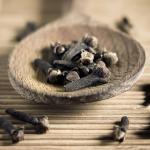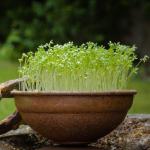Skin diseases & Ayurved
24.08.2007 |



Skin diseases & Ayurved
Ayurved is not only an ancient Indian Medical science but it is a science which gives knowledge about life. Maintaining health of a healthy person & curing a disease are twofold aims of Ayurved.
3 Dosha i.e. Vata, Pitta, Kapha; 7 Dhatu i.e. Rasa, Rakta, Mansa, Meda, Asthi, Majja & Shukra; 3 Mala i.e. Mutra, Purisha & Sweda are the basic elements of human body. Balance state of 3 Dosha, 7 Dhatu & 3 Mala is essential to maintain health of healthy person while imbalance in any of these elements lead to various diseases. Different diseases manifest according to various causative factors, aggravation of Dosha causing vitiation of Dhatu & Mala; constitution of a person, season, habitate etc.
Skin diseases called as “Kustha” in Ayurvedic texts are caused due to vitiation 7 body elements i.e. 3 Dosha viz Vata, Pitta, Kapha & 4 Dushya viz skin (twak), Rakta, Mansa & ambu (water element).
Different causative factors of skin diseases
A) Dietary causes
1) Excessive intake of liquid food
2) Excessive intake of unctuous / oily food i.e. deep fried things like Pakoda
3) Excessive intake of heavy food i.e. Cheese, Paneer
4) Excessive intake of yogurt
5) Excessive intake of fish
6) Excessive intake of black gram
7) Excessive intake of raddish
8) Excessive intake of sesame
9) Excessive intake of milk & milk products
10)Excessive intake of jaggery
11)Excessive intake of recipes prepared from dove e.g. Paratha, bread
12)Excessive intake of sour food like vinegar, sauce
13)Excessive intake of salty food like pickle, ruffles
14)Overeating
15)Newly ripped grains
16)Incompatible diet like fish & milk together, sour fruits & milk
together
17)Fermented food like bread, Dosa
B) Behavioral causes
1) Exercise immediately after taking meal
2) To become angry after taking meal
3) Cold water intake / bath immediately after physical exercise
C) Vegavarodha (Withholding natural urges)
Withholding all natural urges specially urge of vomiting can cause various skin diseases.
These causative factors vitiate 3 Dosha & 4 Dushya i.e. Skin, Rakta, Mansa & Watery element in the body, which are responsible for manifestation of skin diseases.
D) Specific causes
Ayurved believes that some diseases like skin diseases, fever are also caused due to misbehavior done in previous birth like disobeying teachers, spiritual masters.
Types of skin diseases
According to Ayurved skin diseases are divided into mainly 2 types which are again subdivided into 7 & 11 types.
1) Mahakustha (Major skin diseases) – 7 in numbers
2) Kshudrakustha (Minor skin diseases) - 11 in numbers
All these 11 types of Kustha can be classified & treated as per dominance of Dosha.
· Vata dominance skin diseases in which affected skin becomes dry, rough, having black / gray discolouration & pin pricking pain.
· In Pitta dominant skin diseases patient suffers from local burning sensation, red discolouration, foul smell, pustular discharge.
· White discolouration, itching, coldness, infected wound are the symptoms of Kapha dominant skin diseases.
· Dominance of 2 or all 3 Dosha exhibit the symptoms of respective 2 or 3 Doshas.
Home remedies for skin diseases
Do’s
Common principles of diet – Diet having Pungent, Bitter & Astringent taste; & the diet which is light to digest is recommended.
1) Cow’s milk – 200 ml + Turmeric powder – 1 pinch
2) Buttermilk – 200 ml + cumin seed powder – ¼ teaspoon
3) Boiled hot water for drinking
4) Grains – Roasted rice, Barley
5) Beans – Green gram, Red lentil
6) Vegetables- Fenugreek leaves, Bitter gourd, White pumpkin, Snake gourd
7) Condiments – Cumin seeds, Turmeric, Coriander seeds & leaves, Garlic, Mint leaves, Curry leaves, Black pepper.
8) Recipes – Green gram Khichadi, Paratha of fenugreek leaves, Chutany of Garlic, Mint & coriander
Don’t
Common principle – Diet having Sweet, Sour & Salty taste & the diet which is heavy to digest should be avoided.
1) Chilled water, cold drinks
2) Buffalo milk, Yogurt, Cheese, Paneer
3) Jaggery
4) Excessive salt, salty food like ruffles
5) Excessive sour things like Vinegar, Sauce
6) Excessive sweet things like chocolate, various milk products
7) Black gram, Kidney bean, Horse gram
8) Chilli, Capsicum
9) Cucumber, Tomato
10) Banana, sour fruits, fruit salad
Home remedies
1) Apply turmeric powder on skin diseases having secretions.
2) Apply turmeric paste in water / milk on skin disease having redness, itching.
3) Apply paste of neem leaves on affected part specially having infections & itching.
4) Apply sandlewood paste on the skin having red coloured rash / burning sensation
5) Apply fine cumin seed powder on the skin having itching & excessive sweating.
Panchakarma
Ayurved describes 2 modalities of treatment
1) Shodhana Chikitsa (Eliminating treatment)
2) Shamana Chikitsa (Palliative treatment)
In Shamana chikitsa, Dosha are pacified in the body with various oral medicines. In Shodhana chikitsa vitiated Dosha are eliminated out of the body through nearest route. Thus radical removal of vitiated Dosha & disease is possible with the help of Shodhana chikitsa.
Shodhana chikitsa is also called as Panchakarma as it comprises 5 procedures viz
1) Vamana – Emesis
2) Virechana – Purgative
3) Basti – Medicated enema
4) Nasya – Nasal administration
5) Raktamokshana – Bloodletting
Panchakarma chikitsa is indicated when –
1) When Dosha are vitiated to large extend.
2) Dosha are Nirama.
3) Strength of the patient is good.
Kustha / skin diseases are Bahudosha pradhana vyadhi i.e. diseases caused due to vitiation of Dosha at large extend. Also this disease is caused due to vitiation of 3 Dosha. Thus all types of Shodhana chikitsa are indicated in skin diseases. Panchakarma should be given frequently in skin diseases for radicle removal of Dosha. It is described in Sushrut Samhita that in chronic skin diseases, Vamana should be done every 15 days, Virechana once in every month, Raktamokshana twice in year & Nasya after every 3 days.
Vamana is recommended mainly in skin diseases having dominance of Kapha dosha.
Virechana & Raktamokshana are beneficial in skin diseases having dominance of Pitta Dosha & Rakta Dhatu. Basti should be given in dominance of Vata Dosha while Nasya is recommended in skin diseases in head, neck & face region.
Shodhana chikitsa comprises 3 procedures
1) Purvakarma (Pre procedures)
a) Snehana (Internal & external oleation)
b) Sweadana (Sudation)
2) Pradhanakarma (Main procedure) i.e. Vamana, Virechana, Basti, Nasya & Raktamokshana.
3) Paschatkarma – Special diet regimen which improves digestive power slowly like thin & thick rice gruel, bean soups without & with tadaka & meat soup in sequence.
Panchakarma treatment though having lots of benefits in skin diseases, It has to be given under supervision of expert physician as it may lead to many complications if it is not administered properly.
This article is written by
Dr. Vineeta V. Deshmukh,
Reader,
Ayurved College, Wagholi,
Pune, India
and
Prof. Dr. S. P. Sardeshmukh,
Principal,
Ayurved College, Wagholi,
Pune, India
Dr.S.P.Sardeshmukh is the first Ph.D. Ayurved in Pune University. He is a well-known Ayurvedic Consultant in Pune, Mumbai and abroad. He is Trustee and Chairman of Bharatiya Sanskriti Darshan Trust, Principal of Ayurvedic College, Director of Ayurved Hospital and Research Centre and Director of Atharva Ayurved Pharmaceuticals. He is regularly invited by various organizations from different countries for lectures on Ayurved. Also he has patients all over India as well as in Australia, Germany, Japan, U.S.A., Switzerland, Holand. He is working in teaching field since last 30 years. He has given guidance to many students for M.D. and Ph.D. in Ayurved. He is Member of Board of Studies, Faculty and Academic Counsil in Pune University, Mumbai University. He is ex-Dean of faculty of Ayurved in Mumbai University. He is also Senate member of Maharashtra University of Health Science, Nashik. He has received "Sarvashri Award" 1999 and "Life Time Achievement" Award in the year 2001.
Bharatiya Sanskriti Darshan Trust
Ayurvedic Hospital and Research Center
Wagholi, Pune
www.ayurved-wagholi.org

The Scientific Director of the Ayurveda Academy of Yoga in Daily Life is Univ.-Prof. Dr. S.P. Sardeshmukh .
The Academy is an international educational organisation situated in Vienna, Austria, Europe. It is associated with the Tilak Maharashtra University , Gultekadi, Pune 411 037 , India, through Ayurved College, "Vishwashantidham" , A/P - Wagholi, Tal. - Haveli, Pune , India in order to monitor and maintain the quality of the diploma courses.
www.AyurvedaAcademy.org
This document has been composed with the online instant web content editor which can be found at htmleditor.tools





.jpg)


.png)




